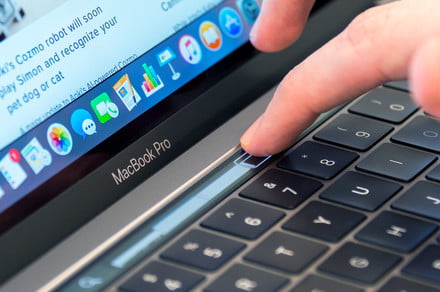In 2016, Apple’s introduced the Touch Bar to its MacBook Pro models, to all except the base model 13-inch MacBook Pro. However, reception to it was mixed. All those changing icons were difficult to learn, and many people found that they kept accidentally brushing the Touch Bar and launching all sorts of functions they didn’t want.
If you are in this boat, we can help. Here are a couple effective ways to limit or disable the Touch Bar on your Mac.
How to limit Touch Bar functionality
If you want an easy way to deal with the Touch Bar, you can quickly freeze it to only basic control commands. In its natural state, the Touch Bar will switch to unique sets of controls for most apps that you open. If this is the primary thing that you dislike about Touch Bar — all those shifting icons that you don’t have time to memorize or understand — then you can disable this part of the Touch Bar, while still leaving the Bar active for changing simple settings.
Step 1: Head to “System Preferences,” the gear-filled icon in the Dock. Once there, select “Keyboard.”
Step 2: Make sure that you are on the first tab in this section, the one that says, “Keyboard.” If you are on a MacBook Pro with a Touch Bar, you will notice an extra section in this area specifically for the Touch Bar. You can change several settings here, but the one you want to select for this process is “Touch Bar shows.”
Step 3: Switch the “Touch Bar shows” dropdown menu to “Expanded Control Strip.” This will lock the Touch Bar on the control strip give basic functions like brightness, volume, skipping songs, and splitting windows. The Touch Bar will not switch to any other settings while this option is enabled, no matter what apps you use.
Of course, this option is only really effective if you don’t mind the Touch Bar being on. If your problem with the Touch Bar is more physical, like brushing up against it with your fingers, switching to only control commands probably won’t help at all. In fact, it could make things worse if you accidentally start messing with your volume or screen brightness. For issues like this, it’s best to consult our second option.
How to disable the Touch Bar entirely
While Apple may not provide a way to fully disable the Touch Bar, there is a third party solution…if you are willing to use it. LumingYin has created a solution called TouchBarDisabler that you can download at Github.
When downloaded, this tool maps a keyboard key to switch off the Touch Bar entirely. However, to do this the download will also remap your brightness, mute, and volume keys: It will explain this process, but you can also go into the “Keyboard” section of “System Preferences” and change key-mapping yourself if you don’t like the first results.
Note that when you download the tool, you may get a security message that blocks the app from running. If this happens, right-click on the app and confirm that you do indeed want to “Open” it to begin the process.
The final catch to this solution is that the software was originally developed for MacOS High Sierra, the version of MacOS when the Touch Bar first came out. While it does receive some periodic updates, there’s no guarantee that the software will be fully compatible in the future, and it could cause system problems for MacOS. However, all things considered, it’s the most stable solution available for fully shutting down your Touch Bar and remains usable in its current condition.
Editors’ Recommendations
- Get up to $200 off the MacBook Pro in Best Buy’s Black Friday sale right now
- Best Buy’s flash sale takes up to $800 off Apple’s 2018 MacBook Pro today
- The MacBook of 2021 could kiss the keyboard, and Intel, goodbye
- How to take a screenshot on a Mac
- Google Home Hub, Lenovo Smart Displays get better alarm functionality

